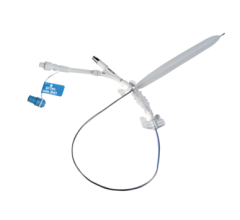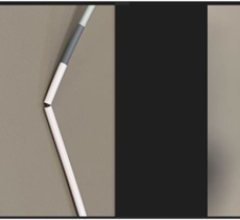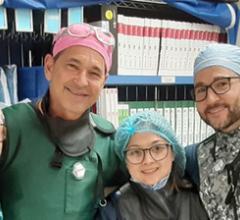October 24, 2007 — Drug-eluting balloons could offer a viable alternative to drug-eluting stents (DES) in the treatment of coronary artery disease, according to research results from two studies presented today at TCT 2007, in which one of the studies marked the first direct comparison between DES and drug eluting balloons.
The SeQuent Please drug-eluting balloon catheter (not FDA approved) from B. Braun Melsungen AG in Germany delivers drugs directly to the lesion during angioplasty. A pilot study published last year in the New England Journal of Medicine first shed light on this potential treatment option. (Scheller et, al. “Treatment of Coronary In-Stent Restenosis with a Paclitaxel-Coated Balloon Catheter.” New England Journal of Medicine. November 16, 2006. Scheller presented the latest results of his ISR I and ISR II studies at TCT.)
In the PEPCAD II study, Martin Unverdorben, M.D., compared SeQuent Please to another manufacturer’s DES in 131 patients over six months. The team evaluated restenosis and the rate of major adverse cardiac events (MACE) such as heart attack, bypass, repeat stenosis or death. The study showed that patients treated with the drug-eluting balloons experienced only 3.7 percent restenosis and 4.8 percent MACE, as compared to patients with DES, wherein restenosis was 20.8 percent with 22.0 percent MACE rate.
In a separate study, Dr. Unverdorben evaluated the use of drug-eluting balloons for the treatment of small vessel disease in 120 patients. PEPCAD I is the first study to investigate the use of drug-eluting balloons in “native” lesions, in which patients have not already been treated by DES or bare metal stents. After six months, native lesions treated solely with SeQuent Please showed only a 5.5 percent binary restenosis rate and 6.1 percent MACE. These results compare with previously published results using drug-eluting stents for the treatment of small vessel disease with 31.2 percent restenosis and 18.9 percent MACE.
“Although further investigation is needed, drug-eluting balloons alone or in combination with bare metal stents could potentially reduce the use of or replace drug-eluting stents for a wide range of indications,” said Michael Boxberger, M.D., director of Clinical Science, B. Braun Melsungen AG.
For more information: www.bbraunusa.com


 June 13, 2024
June 13, 2024 








